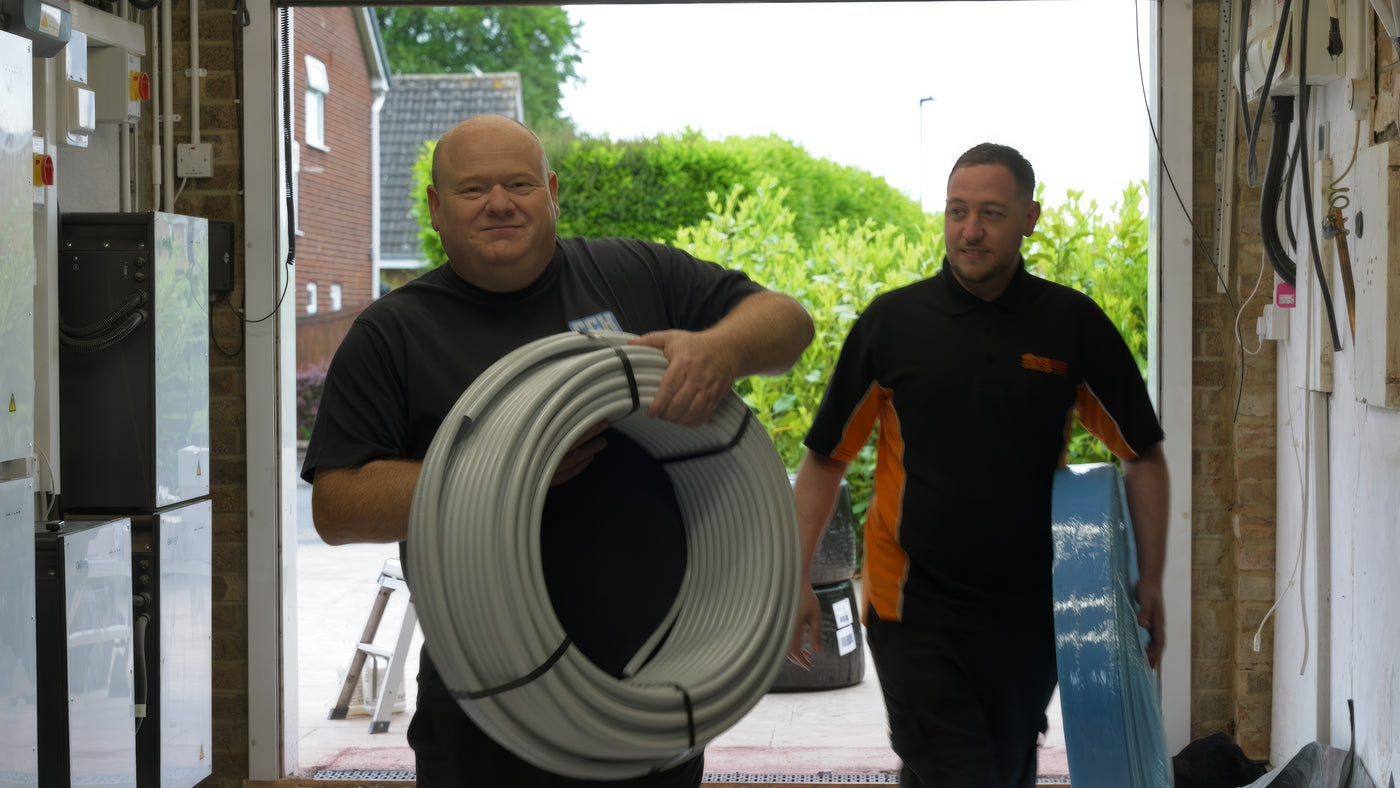1. Plan Before You Start
Never skip the planning stage - proper planning is crucial to the success of your DIY underfloor heating project. Before purchasing materials or starting any work in your home or business, take the time to carefully plan every aspect of your installation.
- Measure the Area: Accurate measurements are essential to ensure you buy the right amount of underfloor heating heating materials. Calculate the total area to be heated and exclude fixed furniture such as cabinets or appliances that don't require heating using our underfloor heating room calculator. With tile adhesive and self-levelling compound being non-refundable, it's worth getting the measurement right!
- Choose the Right System: Decide between an electric or water-based system based on your room size, budget, and heating requirements. Electric systems are often easier for DIY installations, while water-based systems can be more complex but offer lower long-term running costs.
- Check Floor Compatibility: Ensure your chosen floor covering is compatible with underfloor heating. Some materials, like certain types of wood or carpet, may require specific considerations or additional preparation.
2. Always Add Insulation
Insulation boards are a key factor in maximizing the efficiency of your underfloor heating system. Without proper insulation, much of the heat generated can be lost downward, reducing the system’s efficiency and increasing running costs.
- Use Insulation Boards: Insulation boards beneath your heating system can significantly reduce heat loss and improve heat-up times. Choose boards that are compatible with your chosen system and floor type.
- Consider Edge Insulation: For larger installations, particularly with water-based systems, perimeter insulation can help prevent heat loss at the edges of your room, ensuring even heat distribution.
3. Follow Manufacturer’s Instructions
Each underfloor heating system comes with specific installation instructions. Adhering to these guidelines is important for a successful and safe installation.
- Lay Out Heating Mats or Pipes Correctly: Pay close attention to the spacing and layout of heating mats or pipes. Uneven spacing can lead to cold spots or overheating in certain areas.
- Install the Thermostat Properly: The underfloor heating thermostat is a critical component for controlling your heating system. Follow the manufacturer’s wiring and installation instructions carefully to ensure accurate temperature control. It is always recommended to get an electrician to connect up your electrics.
4. Test System Before Covering Floor
One of the most important steps in a DIY underfloor heating installation is testing the system before you cover it with your final floor layer. This ensures that any issues can be addressed before they become hidden problems.
- Conduct Resistance Testing: Use a digital multimeter to check the resistance of your heating elements before and after installation. Compare the readings to the manufacturer’s specifications to confirm that everything is working correctly.
- Check for Leaks (Water-Based Systems): If you’re installing a water-based system, thoroughly test for leaks in the pipework before covering the pipes with screed or flooring.
5. Choose Right Floor Covering
The floor covering you choose plays a major role in the performance of your underfloor heating system. Some materials are more conductive and will work better with underfloor heating than others.
- Tiles and Stone: These materials are excellent for underfloor heating because they conduct heat well, providing efficient and even heat distribution.
- Laminate and Engineered Wood: These can also work well with underfloor heating, but it’s essential to choose systems specifically for laminate or wood to avoid warping or damage.
- Carpet: If you prefer carpet, ensure it has a low tog rating (ideally less than 1.5) to allow heat to pass through efficiently.
6. Don’t Skip Maintenance
Once your underfloor heating system is installed, regular maintenance will ensure it continues to operate efficiently for years to come.
- Regularly Check Thermostat: Ensure that your thermostat is functioning correctly and adjust settings as necessary to maintain comfortable temperatures while optimizing energy usage.
- Monitor System Performance: Pay attention to the system’s performance over time. If you notice any uneven heating or higher-than-expected energy bills, it might be time to inspect the system for potential issues.
7. Seek Professional Advice If Needed
While DIY underfloor heating is achievable, some aspects may require professional assistance for your safety.
- Electrical Connections: If you’re not confident in making electrical connections, it’s wise to hire a qualified electrician to connect your heating system to the mains.
- Complex Installations: For larger or more complex installations, particularly water-based systems, consider consulting a professional to ensure everything is set up correctly.
Call 01268 567016
for expert advice
Speak to our experts
UnavailableOur underfloor heating experts are available weekdays from 7am to 6pm.
All our technical staff are fully qualified to deal with your enquiry. Contact us for expert advice on underfloor heating.


